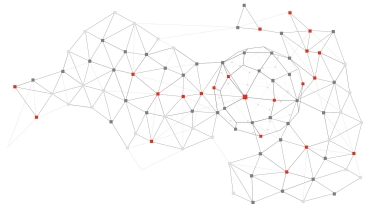
Banking in a whole new world
We are living in a whole new world now. But unlike Alladin’s, our “new world” is something we could not freely explore ‒ in a magic carpet or otherwise.
Who would have thought that one day we would be celebrating birthdays, weddings, graduations, and other special occasions in front of our devices through video calls and live streaming? That summer vacation will be spent entirely at home and not on the beach?
When we implemented a lockdown four months ago to control the spread of the coronavirus, it saved many lives that otherwise would have been at risk. However, it also cost the jobs and livelihood of many.
According to Labor Secretary Silvestre Bello III, 3,012 companies have temporarily shut down their operations and around 200 closed their businesses permanently since January. Consequently, unemployment rate surged from 5.3% in January to 17.6% in April.
There seems to be no other way but to continue opening the economy lest more people die not because of the virus but due to hunger. Even if businesses resume their operations, not all can cope because of the losses they have already suffered during the stricter quarantine.
This is where banks and other financing institutions come into play.
The banks’ role in economic development has always been crucial. They spur economic activities by infusing capital to businesses that require funding and securing those funds from those who have no need of the same for the time being. Especially during crisis situations, banks had been vital in rescuing companies and economies from default as what happened during the Asian Currency Crisis. Banks provided bridge loans and restructured existing loans to support cash-strapped entities.
This intermediary role of the bank has kept an economy going and growing. It is for this reason that the government and regulators need to protect and ensure that the sector is sound, robust and resilient.
The Bangko Sentral ng Pilipinas (BSP) has instituted several measures that helped banks remain liquid and well-capitalized. It reduced the reserve requirements, lowered the required minimum liquidity ratios for smaller banks, and relaxed payment of obligations to its rediscounting facility, among others. Consequently, liquidity ratios, such as cash to deposit and liquid assets to deposit ratio, of the banking sector increased from 20.5% to 22.2%, and 47.9% to 49.9%, respectively from December 2019 to May 2020. Monetary authorities are also pushing for the passage of the Financial Institution Strategies Transfer (FIST) bill to help banks unload their non-performing assets and convert these into earnings and cash. With all these support from both the government and regulators, banks are well-positioned to assist in the recovery of ailing businesses.
Nevertheless, banks are cautious when it comes to lending during these times. We noticed a 2% (about PHP200bn) decline in loan portfolio from December 2019 to May 2020. Accordingly, loans to deposit ratio of the banking industry likewise decreased from 80.2% to 75.8% during the same period. In the long run, this is not healthy for both the financial services sector and the economy. Banks would need to extend credit to generate earnings more than the potential losses it anticipates from defaults, and from the cost of carrying deposits. They would also be missing the opportunity to build lasting relationships with borrowers if they would fail to give financing now when their clients needed it the most.
How can banks manage risks during this time?
It is expected that most borrowers will not show healthy cash flows at this time. But banks should consider the borrower’s strategies and plan to turn around the business. Hence banks should be able to carefully assess the viability and robustness of a debtor’s business plan. The company’s track record pre-COVID and owner’s credibility and competence should also be checked.
Banks should also be able to match and tailor its payment terms with the projected cash flows of the borrower. While this is more common for project financing, a borrower’s situation may be like a developing project with zero to minimal cash offhand.
Banks can also explore sharing their risk. Aside from credit insurance protection, there are those that are provided by government institutions such as the Philippine Guarantee Corporation.
Once credit is given, banks should regularly and continually monitor the business’ performance vis-à-vis the plan. As agreed with the borrower, banks can set realistic targets and KPIs (key performance indicators) that both parties can monitor through sound tools. Where possible, it should work closely with the borrower and support its financing needs so the same can successfully execute its strategies.
Through these measures, banks will be able to manage their risks accordingly.
Banks should bear in mind its vital role in helping the economy bounce back from this crisis. While it may be protecting itself from increasing credit risk by being cautious, it needs to balance this with taking the opportunity to build and nurture relationships with clients.
If done right, helping these borrowers now could bring more business to the bank in the future ‒ i.e. when the pandemic is over or when we are faced with another “new world”, one that we know better.
Contact us

Catherine H. Lipana-Gomez
Deals and Corporate Finance Partner, PwC Philippines
Tel: +63 (2) 8845 2728














